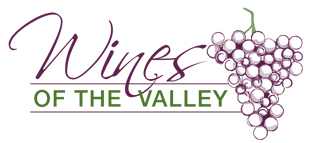Techniques to produce 'Bubbly'
By JENNIFER COSSEY
Digested from Oregon Wine Press
December 2011
Oregon has a climate ideally suited for sparkling wine production, in particular for the classic Champagne — that small region of France from which bubbly gets its name — grapes of Pinot Noir and Chardonnay as well as Pinot Meunier.
The problem with producing sparkling, especially in the traditional Champagne method, is an investment in time and money. Most wineries don’t have the capital, equipment or experience to make the move.
“The economics are difficult,” said James Cahill, winemaker for Soter Vineyards. “Great wines require great grapes, and it is a mistake to think that under-ripe fruit farmed for quantity would be adequate for the process. Add to this the expense of the process and the fact that the wines take years before they are ready to go to market, and the investment adds up quickly.”
This is why several winemakers look to others for guidance as well as equipment and expertise. At Laurel Ridge Winery, where they make traditional-method sparkling wines, they have extended a hand to others to help them make their products and are currently working with nine producers to do just that.
There are various approaches to production of sparkling wine -- Méthode Champenoise, Charmat, carbon dioxide injection, and a technique that involves capturing bubbles at primary fermentation.
The traditional Méthode Champenoise, also known as Méthode Traditionnelle, is used in the production of Champagne, a Spanish sparkling wine known as Cava and other international sparklers.
Using this method, the base wine, or cuvée, is bottled, and several grams of yeast and sugar, called liqueur de triage, are added to instigate secondary fermentation. Once it is achieved and the happy bi-product of carbon dioxide gas (bubbles) are created, the bottles are turned ever so slightly to reposition the sediment in a process called riddling. This movement is geared towards re-depositing the lees into the neck of the bottle for their eventual removal.
Once done in wooden A-frame stands with holes just big enough to fit the neck of a bottle, called riddling racks, this time-consuming method is now often done by a machine called a gyropalette which riddles the bottles at predetermined intervals.
Some producers like Soter, Laurel Ridge and Domaine Meriwether still perform riddling by hand; others, like Argyle, use the gyropalette.
“It used to take me three weeks to turn the wine. The machine does it in five days. The bottles don’t know the difference,” said Rollin Soles of Argyle.
Once the lees have moved into the neck of the bottle, the wine is left to age anywhere from six months to 15 or more years, depending on the complexity the winemaker is seeking and the financial capabilities of the winery — most cannot afford to leave their profits sitting in bottles for too long.
After the wine has aged, the neck is frozen, and the cap is removed with pressure from inside the bottle forcing out the lees in a process called disgorging. This procedure aids in clarifying the wine. At this point, varying amounts of sugar are added, called dosage, mostly to balance out acidity rather than to create a sweet wine. The bottle is then corked to maintain the carbon dioxide.
The Charmat method, also called Metodo Italiano, is a slightly more cost-efficient method. In this process, wine goes through secondary fermentation in large stainless steel tanks and is bottled under pressure. Small long-lasting bubbles are produced, like those found in the Italian sparkling wine Prosecco. Joe Dobbes, who entered the sparkling arena with his 2010 vintage, uses this technique for his Secco to maintain a higher quality and lower price.
Another technique for crafting sparkling wine is carbonation, which is the injection of carbon dioxide (like in soda pop production) directly into the wine. This action produces large, short-lived bubbles and is the least expensive and least time-consuming method.
Finally, a technique sometimes called Frizzanté, in which carbonation is captured at the end of a cooler-than-normal primary fermentation and bottled at low temperatures while carbon dioxide is still in the wine, creating a natural, semi-sparkling effervescence.
Related Content
-
Read more...
5: Specialty Wines
Pinot Noir draws the most attention among Yamhill Valley wines, but wine-lovers can find a diverse local ...
-
Read more...
Making sparkling wine in January
Wine bottle serves a dual purposes in the classic French technique of making classic sparkling wine




